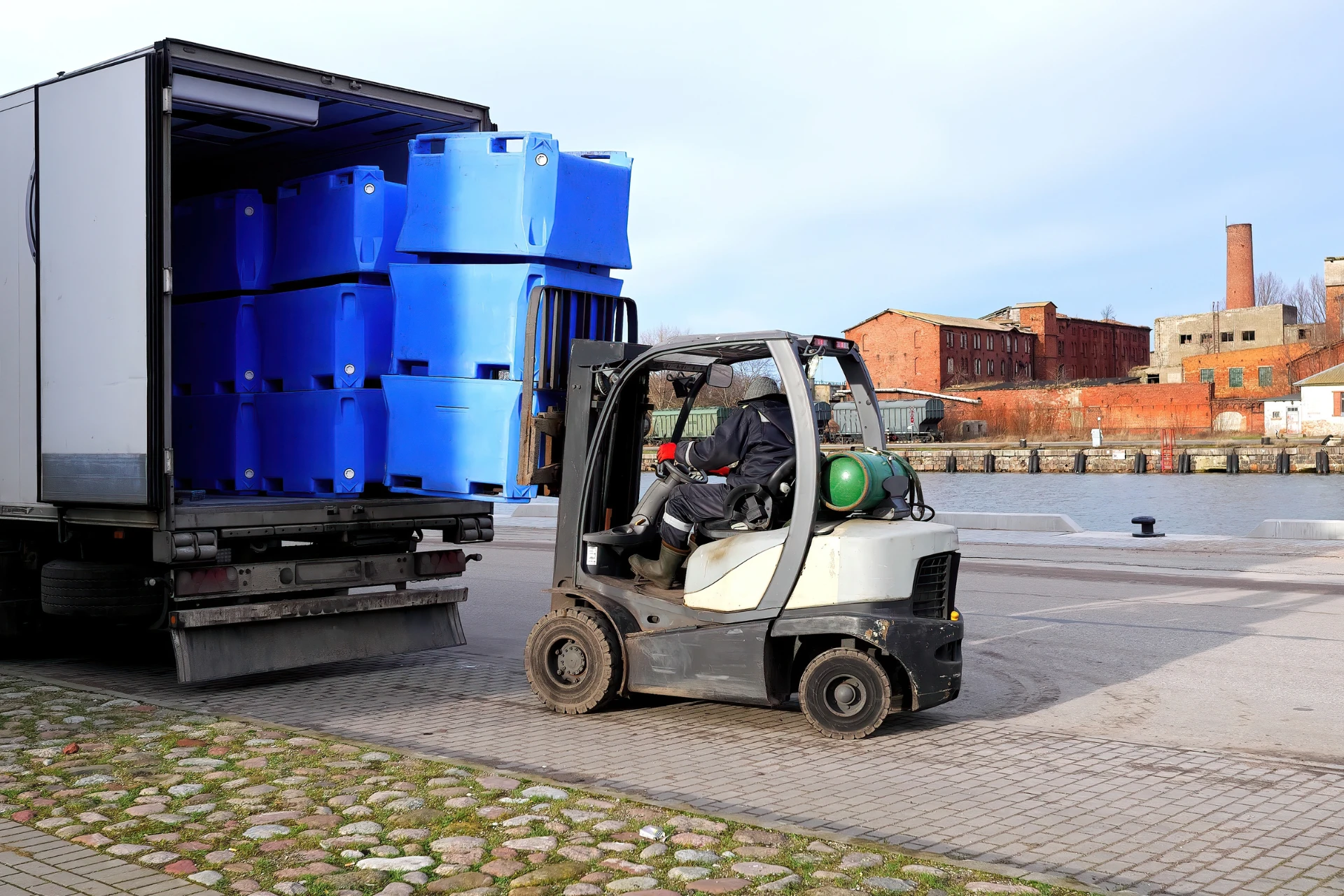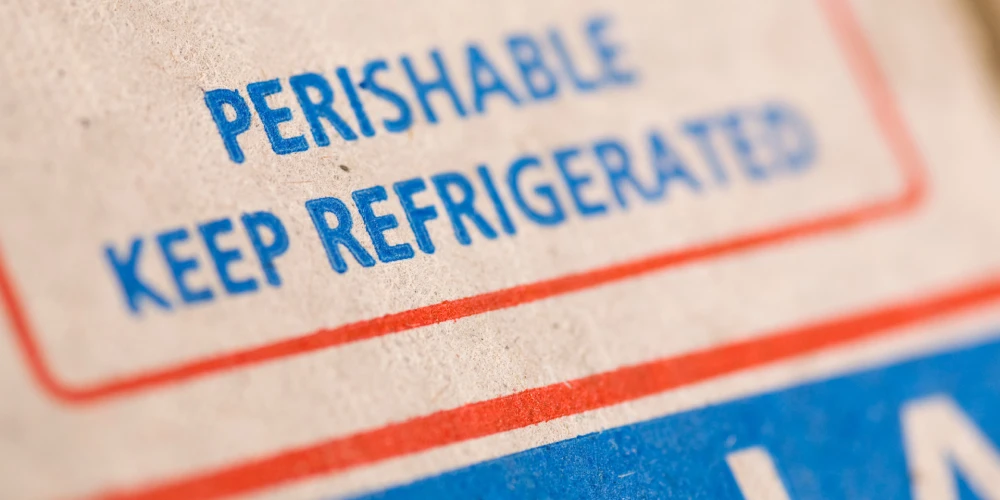Table of Contents
Join our
Mailing List
Stay up-to-date with BREW MOVERS latest news and service offerings.

How to Build Validated Cold Chain Logistics for Beverages
Published Date: 14 November 2025
To build a validated cold chain logistics system for beverage products, (1) qualify each route, (2) test for cold chain packaging, (3) use data loggers, and (4) establish clear handoff SOPs and tracking KPIs. This process protects your product’s quality, flavor, and functionality.
Cold chain logistics for the food and beverage industry are often relegated to “refrigerated transport.” However, while temperature control is essential, it only covers part of what beverage brands need.
What matters is the whole supply chain:
- the shipping lanes;
- the packaging;
- the handling process;
- the real-world data.
To fully protect product quality from environmental conditions and real shipping risks, beverage companies need to validate their temperature-controlled logistics. Here’s how.
What Is Transport Validation?
Transport validation is the process of proving that your shipping lanes can maintain safe temperatures for your products. You do this by assessing risks, testing packaging, and checking performance across all seasons.
Validation for cold chain logistics confirms that your beverages can survive the entire journey without unexpected temperature fluctuations or quality loss.

Image Source: Shutterstock
What Are the Requirements for Transport Validation?
Beverage transport validation requires:
- Lane & Equipment Qualification
- Product Evaluation (especially packaging testing and selection)
- Risk Assessment
- Documented Standard Operating Procedures (SOPs)
- Continuous Tracking & Monitoring
Lane & Equipment Qualification
Your “lanes” refer to the specific shipping routes your beverages take from the point of origin to the final destination. They cover each point from the pickup location to carrier terminals to handoff points.
Each lane behaves differently across the year. Elevation changes and regional weather conditions can make specific segments hotter, colder, or more volatile depending on the season.
Remember: refrigerated trucks still feel the impact of their surroundings. Even with active refrigeration, your temperature-sensitive cargo can face exposure during loading, unloading, or transfers.
That’s why you need to qualify each lane before distributing the product. Beverage brands must also qualify the temperature-controlled transport equipment assigned to those lanes.
How to Qualify Lanes for Beverage Transport
-
- Collaborate with carriers that comply with federal, state, and local regulations. Regulatory compliance and licensing requirements for alcoholic beverages can be especially stringent. Make sure you’re working with carriers that understand the risks.
- Conduct desktop analysis. Research typical temperature range, transit times, and available carriers for each lane, and review historical data.
- Perform lane temperature mapping. Place multiple data loggers at different positions within test shipments to reveal temperature gradients and identify hot or cold spots in your load configuration.
- Run test shipments. Ship a test pallet through each lane to measure ambient and load temperatures, dwell times, and handling conditions. Compare these findings to your desired temperature range.
- Analyze, adjust, and retest as needed. Review the data logger results to identify any excursions or problem areas, and then modify your packaging, routing, or carrier selection accordingly. Continue testing and monitoring until you consistently meet the required temperature.
- Create a lane profile. Document your test findings and create a reference guide that includes recommended packaging, approved carriers, average transit times, and any special handling instructions specific to the lane.
|
What do data loggers do? Data loggers monitor and record data in temperature-controlled environments, like refrigerated trucks, shipping containers, and cold storage facilities. Aside from location and temperature monitoring, many data loggers can also track humidity levels, light exposure, shock and absorption, and more. |
Product Evaluation (Package Testing & Selection)
Cold chain management for beverages, fresh produce, pharmaceuticals, and other perishable goods varies widely. Each industry has its own unique temperature standards and stability requirements.
Even among beverage brands, specific products may respond differently to heat, cold, and time in transit. For example, kombucha products are typically kept between 34°F and 40°F. Like other carbonated beverages, they’re also vulnerable to exploding, so tight seals and cushioned packaging are essential.
To keep temperature-sensitive products safe during transport, brands must carefully select and test their beverage packaging under real-world conditions.
What Is Cold Chain Package Testing?
Cold chain package testing is a process used to test your temperature-controlled packaging and see how it holds up in different scenarios. In many cases, this involves simulating real shipping conditions in a lab or through pilot shipments.
| What are the Types of Cold Chain Packaging & Materials for Beverages? |
|
Risk Assessment
Temperature-controlled logistics carries various risks, and the biggest of all is the weather. Climate change causes an increasing variability in ambient temperatures, which can strain refrigeration equipment and compromise product quality.
Beverage brands also have to contend with delays, handling errors, and other exposure risks. To maintain temperature ranges within favorable levels, a thorough risk assessment is necessary.
Your risk assessment document should contain:
- A list of identified risks along your shipping lanes
- Their potential impact (Would the event cause a minor temperature excursion, or would it lead to total spoilage?)
- How likely each risk is to happen
- Your mitigation strategies
- A schedule for review and updates (ideally once every six months)

Image Source: Shutterstock
Documented Standard Operating Procedures
Whether you use outsourced or in-house logistics, your products will be handled by multiple parties during cold chain shipping. Without clear standard operating procedures (SOPs), each handoff becomes a potential point of failure.
To ensure temperature integrity, everyone who handles your beverage transport must follow the same protocols, regardless of who employs them. Provide your carriers with written procedures and instructions that they can use for training purposes.
Your SOPs should include:
- Product-specific temperature requirements
- Why these requirements matter (quality, safety, regulatory)
- Step-by-step procedures for loading, transit, handoffs, and unloading (preferably with photos)
- Common mistakes to avoid
- Who to contact with questions or problems
Tip: Save time on training every carrier by working with specialized beverage logistics providers like Brew Movers. These companies already have trained teams, proven SOPs, and established networks built for temperature-sensitive beverages and equipment like yours.
Continuous Tracking & Monitoring
Cold chain logistics are always moving. Conditions change, routes evolve, and equipment ages. One-time lane qualification, temperature mapping, and packaging testing won’t guarantee ongoing safety.
You need continuous monitoring to catch problems before they become patterns. To do so, deploy data loggers on regular shipments and track performance across all lanes and carriers.
Keep an eye on key metrics like:
- On-Time In-Full (OTIF): Whether the carrier delivers the full shipment at the agreed-upon time.
- Excursion Rate: Percentage of shipments experiencing temperature excursions/deviations.
Key Takeaways
- Temperature-sensitive goods like frozen foods, cold beverages, and pharmaceutical products need a validated cold chain to maintain quality, safety, and functionality.
- Lane qualification, temperature mapping, and transport equipment assessment help you understand environmental and handling risks during shipping.
- Special packaging keeps beverages within safe temperature ranges, but they must be tested to ensure they can withstand real-world conditions.
- Beverage brands face risks from climate change, handling errors, and equipment malfunctions. Prepare risk assessments and mitigation plans to counter them.
- Standard operating procedures ensure consistent loading, transit, and handoffs across all carriers.
- Data loggers and KPI dashboards let you detect excursions, track OTIF, and optimize operations over time.
Get a Lane Qualification Plan + Logger Kit
Don’t guess if your cold chain logistics are working. Prove it with Brew Movers.
We’ll help you validate your shipping lanes with professional temperature mapping and data logger kits. Our team specializes in moving goods to and from anywhere in North America while maintaining temperature integrity.
We are familiar with the optimal routes, packaging configurations, and cold chain management strategies for various beverage brands. Request a lane qualification plan and data logger kit today to get started!




